Touch down on the tropical soils of Cuba and embark on a journey of remarkable discovery. A country where time seemingly stands still, Cuba boasts a rich trove of wonders, from its heritage cities and savoury cuisine to adrenaline-inducing outdoor adventures and captivating music and festival culture. This comprehensive guide seeks to unravel the magic of Cuba, navigating you through the enchanting streets of Havana, Santiago de Cuba, and Trinidad, unlocking the secrets of traditional Cuban dishes, guiding you to embrace the island’s spirit of adventure, and illuminating the vibrant rythms of its cultural landscape. Furthermore, it’s armed with practical information to ensure your journey is as smooth as a fine Cuban rum. Prepare to explore, appreciate, and savour all that Cuba has to offer.
Exploring Cuban Cities
Exploring the Vibrant Havana
Havana, Cuba’s capital and cultural hub, offers an incomparable blend of historical architecture, vintage cars lining its streets, and the pulsating rhythm of salsa flowing from every corner. At the heart of the city is Havana Vieja (Old Havana), a UNESCO World Heritage site, with its distinct Spanish colonial architecture resonating back to the 16th century. Here you’ll find the Capitol Building, reminiscent of the United States Capitol, and the Great Theatre of Havana, picturesque in its opulence. A salute to its vibrant past is the indomitable El Morro Castle, a beacon of Cuba’s military history. The Malecón, a famous seafront promenade, comes alive at sunset with locals and travellers alike, offering a quintessential Havana experience.
The Historic Santiago de Cuba
On the southeastern tip of the island lies Santiago de Cuba, which steeped in rebellion history, holds a unique place in the chronicles of Cuba. It was here in 1953 that Fidel Castro launched his ill-fated initial revolution against the Batista regime. The Moncada Barracks, the site of the failed attack, now houses a museum on the event that culminated in the Cuban Revolution. Standing atop a hill overlooking the city is El Castillo del Morro, offering a panoramic view that spans over the Santiago de Cuba Bay. Santiago de Cuba’s Carnival, famous for its Afro-Cuban folklore, is a wild extravaganza of music, dance, and vibrant street parades.
Timeless Beauty of Trinidad
The city of Trinidad offers an immersive step back in time. Noted as a UNESCO World Heritage site, the city remains almost unchanged with cobblestone streets, pastel-coloured houses, and horse-drawn carts. Plaza Mayor is the heart of Trinidad, an enchanting central square acutely reflecting Spanish colonial architecture. The nearby Valley de Los Ingenios, once buzzing with sugarcane production, has old mills, plantation homes and slave quarters presenting a glimpse into the city’s sugary past. For a cultural hike, the Parque Natural Topes de Collantes offers picturesque waterfalls and an array of endemic flora and fauna.
Varadero’s Beachside Bliss
Known for its glistening white sandy beaches and azure waters, Varadero is one of the Caribbean’s premier beach destinations. Beyond lounging under the sun, Varadero offers an array of activities such as snorkelling and diving in the nearby coral reefs. The Varahicacos Ecological Reserve is ideal for the adventurous, offering trails and a cool refuge in the form of ancient caves to explore, like the Cave of Ambrosio, known for its natural beauty and pre-Colombian drawings.
Stepping Into the Past at Cienfuegos
Also known as the Pearl of the South, Cienfuegos, a UNESCO World Heritage site, rests along the picturesque bay. Blending Cuban spirit with a distinct French influence, the city astounds with its elegant architecture and well-planned layout. Main sights include Parque José Martí, a square encapsulating the city’s cultural life and the Cienfuegos Cathedral, an example of intricate Gothic architecture. The city’s botanical garden, a plant-lovers paradise, boasts about 2,000 species of plants, of which orchids stand out for their exotic appeal.
These cities encapsulate the various spectra of Cuba’s rich heritage, unique culture, architectural elegance, and environmental splendour, all contributing to a riveting Cuban narrative that enthrals every visitor. Often hailed as one of the most captivating and engaging destinations worldwide, Cuba extends a unique travel experience.
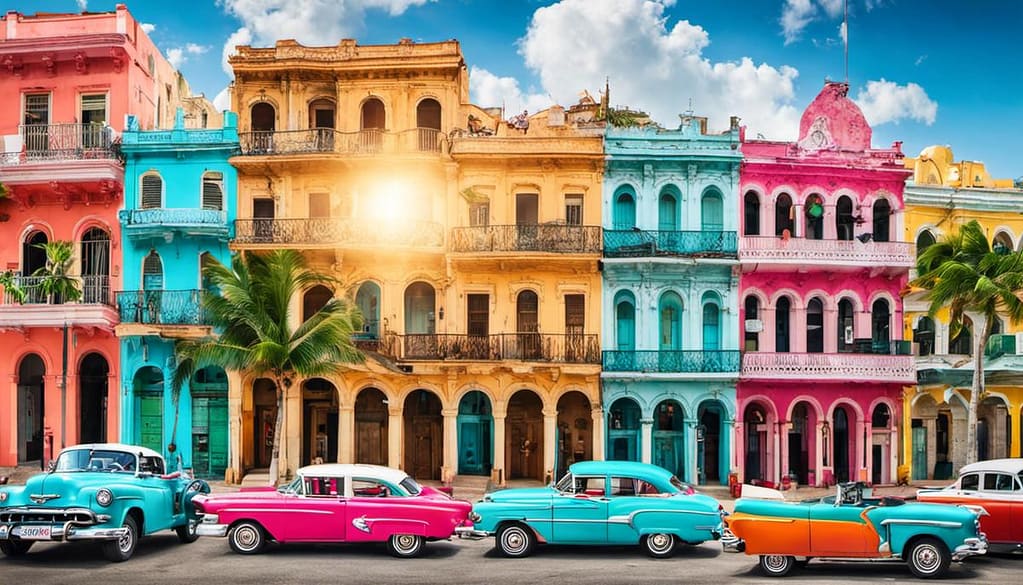
Cuban Cuisine and Restaurants
Cuban Cuisine: A Delightful Tapestry of Flavours
Cuban gastronomy, fundamentally an exotic amalgamation of Spanish, African, and Caribbean tastes, offers a sensory treat that’s engaging to the palate. The nation’s spirit radiates through every traditional dish. Often, the recipes are centred around essential components like rice, beans, pork, and root vegetables.
The quintessential Cuban dish ‘Ropa Vieja’, directly translating as ‘old clothes’, is an irresistible dish of shredded beef in a tomato sauce base, commonly paired with rice. ‘Moros y Cristianos’, or ‘Moors and Christians’, a fundamental dish, comprises white rice and black beans.
The globally favoured snack, ‘Cuban Sandwich’, truly demonstrates its authentic originality in Cuba. Crafted with Cuban bread, ham, Swiss cheese, pickles, and mustard, it’s a straightforward yet tantalising aliment from this Caribbean isle.
Famous Cuban Drinks
No discussion of Cuban cuisine is complete without mentioning the nation’s iconic beverages. From rich coffee to various types of rum, Cuban drinks cater to every palate. The ‘Cuba Libre’, a highball made with cola, lime, and light rum is not only a favourite in Cuba but around the world. Besides this, ‘Mojito’, ‘Daiquiri’, and ‘Cuban espresso’ are representative of Cuba’s popular beverages.
Top Restaurants in Cuba
For the gastronomically adventurous, Cuba presents a vibrant dining scene where both traditional and innovative dishes can be relished. Some of the famous restaurants include ‘La Guarida’ in Havana that serves a fusion of Cuban and international cuisine and is known for its vintage architecture and stunning views.
‘Mediterraneo Havana’ is a farm-to-table restaurant that serves a variety of dishes using fresh, locally sourced ingredients. A hidden gem in Cuba, ‘El Cuajani’ is acclaimed for its rural setting and home-style cooking. Their speciality is the ‘Lechon Asado’, a traditional roasted pork dish.
‘Paladar Los Mercaderes’ in Old Havana is another fantastic option. A ‘paladar’ is a privately owned restaurant, typically run within somebody’s home. ‘Paladar Los Mercaderes’ is known for its scrumptious seafood and meat dishes.
Off the Beaten Track
For those keen to avoid the typical tourist traps, there are plenty of lesser-known restaurants that serve stupendous Cuban fare. ‘Doña Eutimia’, tucked away in a small alley in Old Havana, is one such place. Known for its traditional Cuban cuisine, this restaurant offers a true taste of Cuba. Another hidden delight is ‘El Idilio’, a charming establishment that serves unique variations of fish and seafood dishes.
Experiencing the depth and richness of Cuban cuisine provides visitors with a taste of the nation’s vibrant history and a unique gastronomic delight. Savouring traditional Cuban dishes, sipping on iconic beverages and exploring a blend of highly-recommended and lesser-known restaurants, infuse a flavoursome culinary dimension into your Cuban holiday experience.
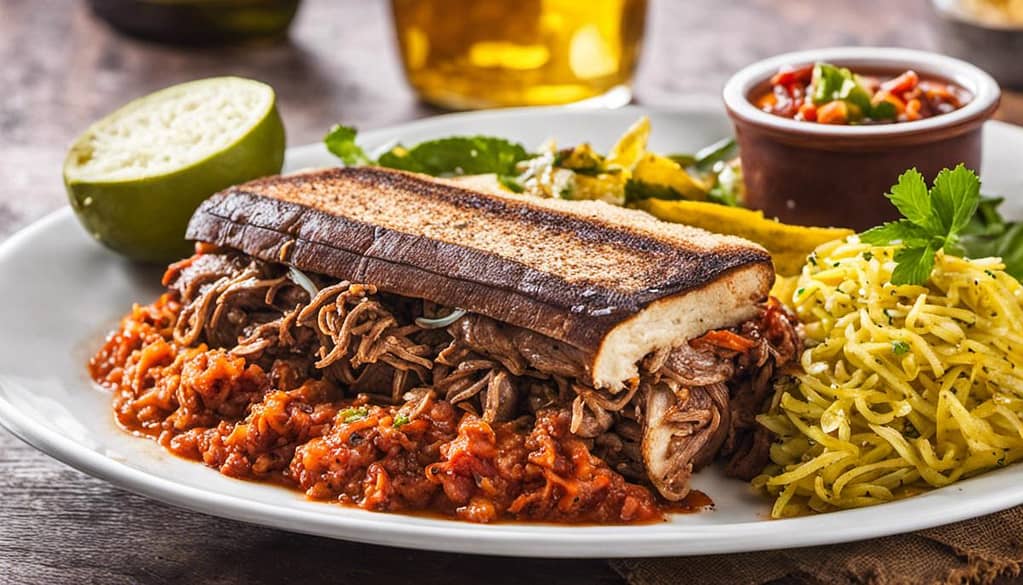
Outdoor and Adventure Activities in Cuba
Discover the Underwater Wonders of Cuba: Scuba Diving and Snorkelling
The joys of Cuba extend far beyond the land, inviting adventure-seekers to explore the majesty of the turquoise waters. Home to a stunning array of coral reefs, the ocean offers a sanctuary to a vast variety of marine wildlife. The underwater realm is awe-inspiring in its diversity and beauty, where scuba divers may encounter everything from vibrant shoals of fish to the majestic sight of sharks. Some of the premier locations for scuba diving include the Bay of Pigs, Maria la Gorda, and Jardines de la Reina.
If you’re more inclined towards tranquil surface explorations, snorkelling offers a wonderful alternative. Floating with the rhythmic pulse of the ocean currents, snorkellers can gaze down upon the captivating world of coral formations and swirling schools of tropical fish. Popular snorkelling locations include Playa Coral and Punta Perdiz.
Ecotourism and Exploration: Hiking in Cuba
If you prefer to travel through mountain trails whilst soaking in the tranquillity of nature, hiking in Cuba won’t disappoint. Many spots provide breathtaking views, varied vegetation, and stunning natural beauty. Explore the El Nicho natural park with its numerous waterfalls and hiking trails snaking around the lush green hills. Alternatively, the Viñales Valley offers diverse trails that pass by majestic rock formations, tobacco farms, and can be combined with caving activities.
Another exciting mountainous region is the Sierra Maestra National Park, home to Pico Turquino, the highest point in Cuba. This park is not just an eco-wonder, it has historical significance as it served as a base during the Cuban Revolution.
Reeling in the Big One: Fishing in Cuba
For angling enthusiasts, Cuba has a myriad of opportunities. Zapata Swamp is the largest wetland in the Caribbean and a haven for fly fishermen. Common catches include bonefish, tarpon, and permit. Meanwhile, deep-sea fishing off the coast of Varadero and Havana are perfect for those after bigger game like marlin and sailfish. Ernest Hemingway, the famed American author, was known to frequent these waters during his stay on the island.
Whether you’re chartering a boat or casting off from a calm lagoon or beach, remember to respect the local marine life and follow catch-and-release policies when necessary.
Exploring from the Sky: Paragliding in Cuba
For those who crave an adrenaline rush, why not view Cuba from a different perspective? Paragliding is a popular sport, offering breathtaking panoramic views of the Cuban landscape. It provides an exhilarating, heart-pounding experience as you soar high above the fields, cities, mountains, and seas with the wind in your face. One of the best locations for paragliding is the region around Viñales Valley, recognised for its stunning scenic beauty.
Indeed, Cuba is globally recognised not just for its rich culture, heritage, and enchanting music, but also for its array of unique outdoor adventures. Delving into the heart of this vibrant island requires a respect for its environment and a curiosity for the path less trodden. Harnessing local wisdom through the expertise of native guides is invaluable in truly savouring the Cuban experience. Cuba extends far beyond the allure of its cities and pristine beaches; it serves as an enticing stage for the outdoor enthusiast.
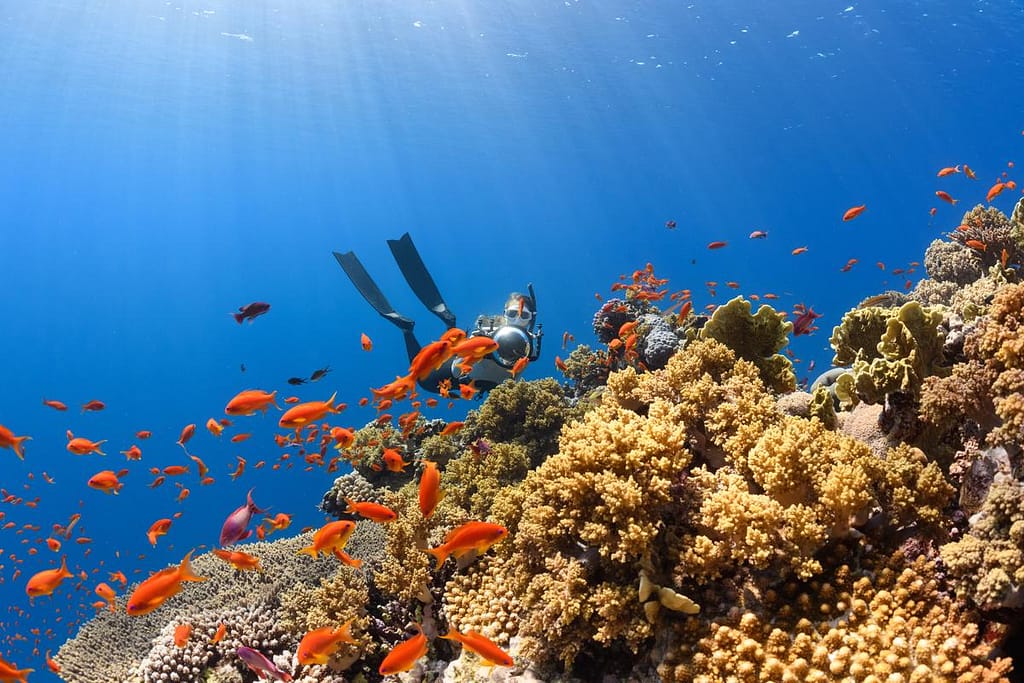
Culture, Music and Festivals in Cuba
Immersing yourself in the Cuban Vibe
Delve deep into the rhythm that fuels Cuban life and you will find salsa, a form of music and dance that beats at the heart of its cultural scenery. Whether it’s the raw vibrancy of rumba or the sensual strides of the ‘son Cubano’, the island’s musical talent is marked by high-energy performances that are a delight to experience. Hotspots such as the Casa de la Música offer intrepid travellers the chance to learn these mesmerising dances or to be part of effervescent street displays.
Entrenched deeply within Cuba’s cultural roots are African, European, and indigenous influences that converge in its traditional music. These sounds are produced by a medley of distinct instruments, from the rhythm-setting bongos and congas to the melodic tres—a triple-stringed guitar—in a harmonious mix that creates an intensely colourful Cuban soundscape.
Festival Fever
Carnivals and festivals are significant cultural events celebrated with fervour and enthusiasm throughout the year. The blend of music, dance, food, and traditional costumes is an absolute feast for the senses.
The most renowned of these events is probably the Havana Carnival. For two weeks every July, the streets of Havana are filled with the lively beats of drummers, breathtaking floats, and dancers in colourful costumes. The atmosphere is electric, a celebration of Afro-Cuban traditions and community spirit.
El Carnaval de Santiago de Cuba
El Carnaval de Santiago de Cuba held in the eastern city of Santiago is one of the oldest and most traditional festivals in Cuba, dating back to the 17th century. This spectacle of music and dance features parades and parties over several days in July. The celebration incorporates musical styles of ‘son’, ‘salsa’ and ‘conga’, drawing large crowds and filling the streets with electrifying energy.
La Parranda de Remedios
La Parranda de Remedios, held in December in Santa Clara city, is a vibrant competition between two neighbourhoods. The teams work all year to create the most impressive displays of lights, floats and fireworks, culminating in an unforgettable night of celebration, fuelled by the rhythms of drums and bells.
International Jazz Festival
Cuba is not just about traditional music and dance, it also boasts a thriving contemporary music scene. The International Jazz Festival which takes place in Havana during December is a musical highlight, attracting international jazz legends and new talents.
Influence of Santeria
Cuba’s history and culture is intrinsically intertwined with religion, and the African-influenced belief system of Santeria profoundly impacts local music, dance and festivals. Santeria ceremonies are characterised by drumming, singing, dancing and sacrificial offerings, which can add a spiritual depth to the exotic cultural tapestry experienced by travellers.
Art Scene
Cuban culture extends beyond music and festivals. The nation’s art scene, often political, is far-reaching and powerful. Significant centres of art include Fábrica de Arte Cubano, an avant-garde space for art, cinema, and music in Havana, and Museo Nacional de Bellas Artes which boasts one of the world’s leading collections of Caribbean art.
Cuba, a land known for its vibrant culture, pulsating music, and colourful festivals, embraces its past while also expressing its multifaceted and evolving identity. Whether one explores the bustling streets of Havana or the serene provincial towns, delving into this rich heritage becomes an obligatory part of every visitor’s journey, making Cuba an enigmatic destination.
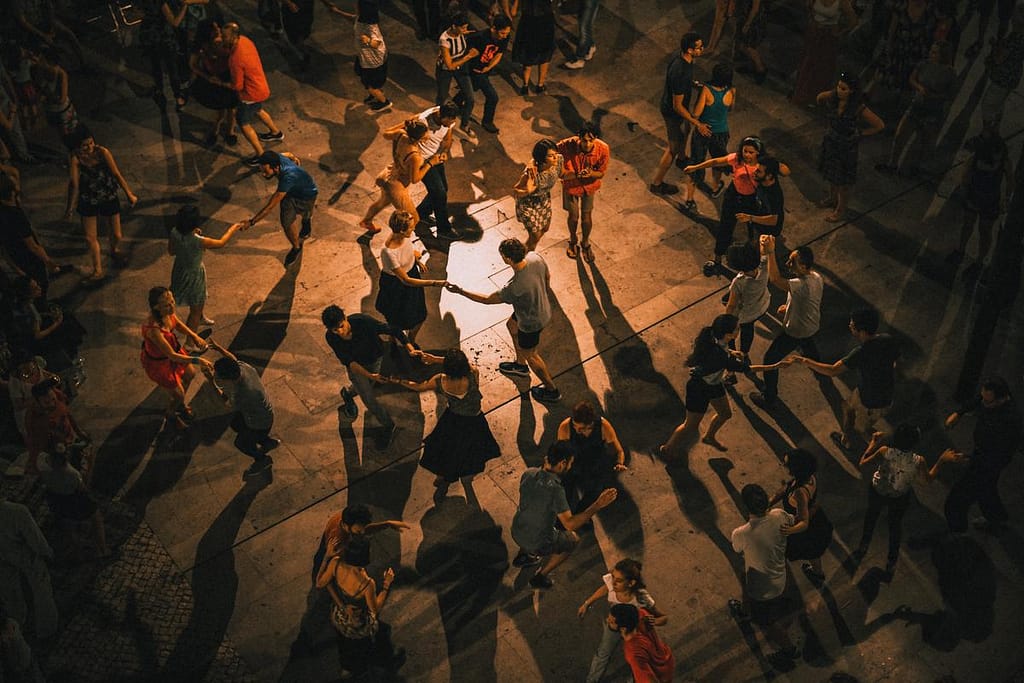
Photo by ardianlumi on Unsplash
Practical Information and Tips
Essential Visa Information
Before one starts their journey to soak in Cuban charm, certain visa requirements need to be met. A ‘Tourist Card’, Cuba’s version of a visa, is a prerequisite for most visitors. However, individuals from countries like Benin, Bosnia, Herzegovina, Macedonia, Malaysia, Montenegro, and Serbia are exempted from this. Notably, travellers from the UK, Canada, the USA, and Australia do need a Tourist Card. This card is usually included in your flight package or can be purchased at the airport before departure.
Local Customs and Etiquette
Cuban locals are friendly, hospitable, and often very demonstrative in their body language. A tap on the shoulder or a quick hug is common, even between newly introduced individuals. While dressing casually is generally acceptable, Cubans take pride in their appearance and look down on overly casual or sloppy attire. Public expressions of anger or criticism, particularly toward government policies or officials, can often be seen as disrespectful.
Transportation
The primary modes of transportation are buses, rental cars, and taxis, which can be government or privately owned. Buses are the most economical choice but are often crowded and not as convenient as other options. Trains are also an option for long-distance travel between major cities and tourist locations, albeit with less reliability and frequent delays.
Weather
The tropical climate of Cuba leads to hot and humid weather conditions. Average temperatures range from 22°C in January to 28°C in July. The driest months occur from November to April while the hurricane season typically runs from June to November.
Best Time to Visit
The best time to visit Cuba is during the dry season, which typically runs from November to April. At this time, temperatures are comfortable, and there is less rainfall. February and March are particularly popular months to visit as they coincide with local cultural events such as the Havana Book Fair and the International Festival of Salsa in Havana.
Health and Safety
For health concerns, it’s advisable to check with your local doctor or travel clinic for any vaccinations you might need specifically for travelling to Cuba. Tap water is generally safe to drink although bottled water is recommended for more sensitive stomachs. As for safety, Cuba is considered one of the safest countries in Latin America for tourists, with a generally low crime rate. However, like in any country, caution should be exercised, such as avoiding carrying large amounts of cash and valuables.
Money Matters
The local currency is the Cuban Peso (CUP), however, travellers can use the Cuban Convertible Peso (CUC), which is pegged to the US dollar and typically used by foreigners. Credit cards are accepted in most places but ensure beforehand that your card provider allows transactions in Cuba. There’s generally a 3% service charge on credit card transactions. Always carry some cash since not all places will accept cards, particularly in remote areas. It’s also important to keep in mind that it can be challenging to change money to and from the Cuban currency outside of Cuba.
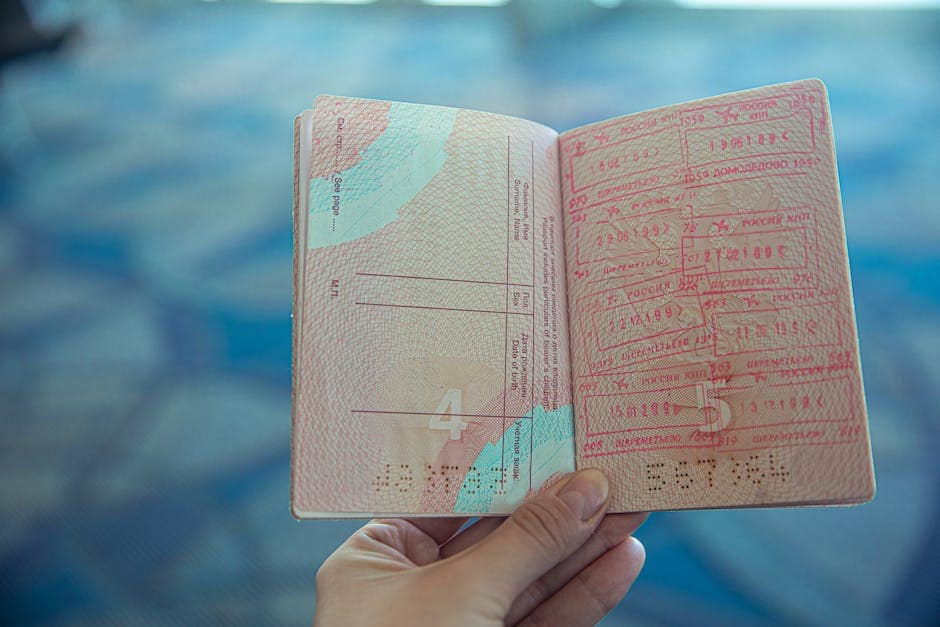
With ancient colonial cities, a diverse culinary scene, exhilarating outdoor activities, a lively music and festival culture, and an array of practical insights, this guide embraces the vibrant essence of Cuba. Its intent is to inspire, enlighten, and assist travellers in planning an authentic Cuban adventure. Whether you’re dancing the night away in a salsa club, savouring a home-cooked Cuban meal, exploring a historic cityscape, or embarking on a scuba diving getaway, you’ll discover the heartbeat of Cuba in every encounter. Prepare to lose yourself in the island’s rhythm, heritage, and allure, as it paints a vibrant portrait of unassuming charm and colourful vivacity. Desiring more than just a vacation, seek a memorable journey in the magical realms of Cuba.

